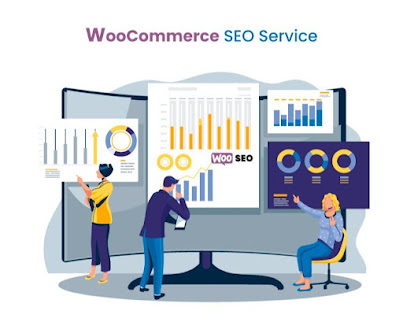In the fast-paced and highly competitive realm of mobile applications, it is essential to distinguish oneself inside the app store ecosystem in order to achieve success. App Store Optimization (ASO) is crucial for improving the visibility of an app, boosting the number of downloads, and promoting user engagement. Nevertheless, numerous developers and marketers often succumb to prevalent ASO errors that can impede their app's efficacy and prominence. This post will examine five prevalent errors and offer practical approaches to prevent them.
1. Disregarding the optimization of keywords:
Keyword optimization is a crucial element of ASO. Many app creators erroneously overlook this vital stage, presuming that their app will be naturally discovered. However, if the app's title, description, and metadata do not strategically include important keywords, it becomes difficult for consumers to discover the app among a large number of competitors.
In order to prevent this error, it is advisable to carry out comprehensive keyword research to select terms that have a large search volume and are relevant to your app's specific market. Employ resources such as Google Keyword Planner, App Annie, or Sensor Tower to identify pertinent keywords and phrases that your intended audience is probable to employ while seeking applications akin to yours. To enhance the visibility and search ranking of your app, seamlessly integrate these keywords into its title, subtitle, description, and metadata.
2. Underestimating the Significance of Visual Assets:
Visual assets, including app icons, images, and preview videos, are crucial elements of ASO that have a substantial influence on users' initial impressions and choices to download. Nevertheless, numerous application developers fail to recognize the significance of optimizing these visual components, instead choosing generic or subpar visuals that do not succeed in captivating users' attention.
To prevent this error, allocate time and money towards developing visually captivating and informative materials that effectively depict the features and functionalities of your application. Create a visually appealing application icon that accurately represents your business identity and distinguishes itself from competition. Generate high-resolution screenshots that emphasize the app's prominent features, advantages, and user interface. In addition, it is advisable to include a preview video that offers customers a live overview of the app's features and user interface.
3. Disregarding User Feedback and Reviews:
User comments and reviews are essential in defining the perception of your app and influencing the decisions of potential users. Nevertheless, several application developers commit the error of disregarding or overlooking user comments, resulting in unfavorable reviews and a decrease in application ratings.
To prevent this error, proactively interact with your users by promptly reacting to their feedback, resolving their complaints, and incorporating important suggestions to enhance your performance. Promote the idea of contented customers sharing favorable reviews and ratings on the app store, as such good feedback may greatly bolster your app's legitimacy and entice new users. Furthermore, utilize user evaluations as a significant resource for gaining insights into the strengths and shortcomings of your app. This will allow you to consistently improve and enhance the user experience.
4. Neglecting to Localize Application Metadata:
App localization is crucial for expanding your app's reach to a worldwide audience and optimizing its performance in various countries. Unfortunately, numerous app developers fail to prioritize app localization, instead depending exclusively on the app's native language and metadata to appeal to consumers globally.
To prevent this error, consider investing in app localization by translating your app's metadata, such as the title, description, keywords, and screenshots, into numerous languages to accommodate various linguistic preferences. Perform market research to discover lucrative areas and languages in which your software can achieve significant popularity, and then prioritize localization efforts accordingly. By customizing your software to suit local cultures and languages, you may greatly enhance its global reach and attractiveness to users from other countries.
5. Disregarding the process of enhancing performance:
Efficiently improving performance is a crucial element of App Store Optimization (ASO) that directly influences user contentment, loyalty, and app store positions. Nevertheless, numerous application developers commit the error of disregarding performance optimization, leading to sluggish loading durations, frequent system failures, and unfavorable user encounters.
In order to prevent this error, make performance optimization a priority by optimizing the code of your application, decreasing file sizes, and limiting loading durations. Perform comprehensive testing on several devices and operating systems to proactively detect and resolve performance issues. Utilize app analytics and user input to monitor performance indicators such as app crashes, latency, and responsiveness. Continuously optimize your app to provide a smooth and uninterrupted user experience.
In conclusion:
App Store Optimization (ASO) is a complex procedure that needs meticulous preparation, strategic implementation, and ongoing optimization in order to enhance the exposure, downloads, and user engagement of your app. To position your app for success in the competitive app store landscape, it is crucial to avoid common ASO mistakes. These include neglecting keyword optimization, overlooking the significance of visual assets, ignoring user feedback and reviews, failing to localize app metadata, and neglecting performance optimization. By applying the practical tactics mentioned in this article, you may improve your app's visibility, attract a worldwide audience, and achieve long-lasting growth and success.



.png)



